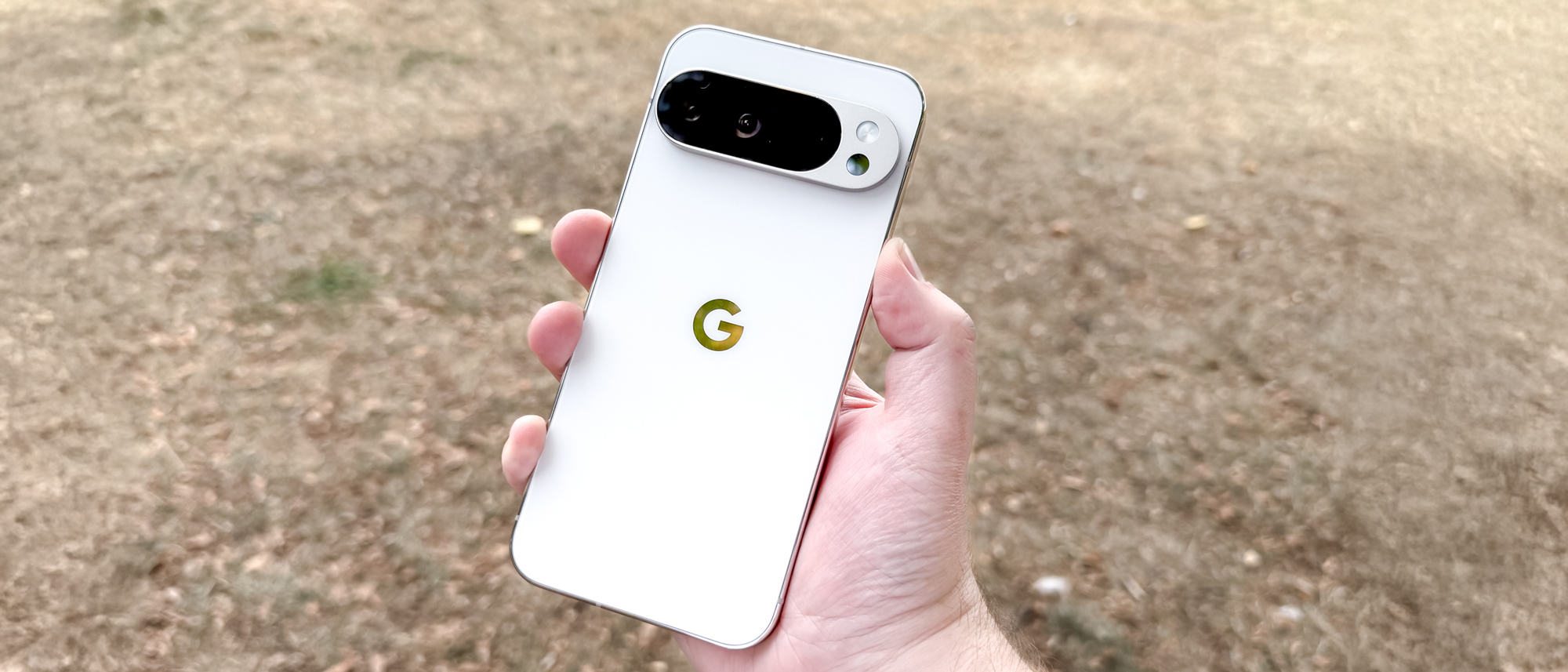Tom's Guide Verdict
Smart but sparse changes keep the Pixel 10 Pro XL among the top Android phones. It remains underpowered for tasks like gaming, but that doesn't matter if your focus is on the still-excellent cameras, super-bright display or AI features. Just be aware that to get the most out of those features, you'll have to wait for updates or for Google's tools to get to grips with your data.
Pros
- +
Brightest display we've ever tested
- +
Even more AI and software features to try
- +
Strong cameras with new 100x zoom mode
Cons
- -
Still lacking in computing power
- -
AI features are incomplete or take time to get going
Why you can trust Tom's Guide
The Google Pixel 10 Pro XL is named in part after its size. But to get to grips with how good a phone it is, it would be wrong to focus on physical qualities alone.
It's easy to point to things like the phone's incredibly bright display or its versatile cameras as major selling points. But this is a phone where the true value lies beyond the specs list.
There are, in typical Google fashion, lots of AI features to play around with; features with a wide range of applications and utility. It's just a pity that Google seems to have learnt some bad habits from Apple in not having all its features ready for launch day. Plus Google flagship phones’ inherent weakness in terms of power remains, even if battery life has improved.
As the final big Android phone launch we expect this year, I've been testing the Pixel 10 Pro XL against its main competition to see if it's worthy of our best phones list, and also the latest iPhone just in case you're considering switching to or from an Apple phone. It’s resulted in some of the most interesting phone comparisons of 2025, and I’m thrilled to be able to take you through them.
But if the Pro XL isn't the model for you, take a look at our reviews of the base Pixel 10, Pixel 10 Pro and Pixel 10 Pro Fold to see if they're better suited to your needs.
Google Pixel 10 Pro XL: Specs
| Row 0 - Cell 0 | Google Pixel 10 Pro XL |
Starting price | $1,199 / £1,199 / AU$1,999 |
Display | 6.8-inch Super Actua (OLED) (1344 x 2992) |
Refresh rate | 1 - 120Hz adaptive |
Rear cameras | 50MP main (f/1.68), 48MP ultrawide (f/1.7), 48MP 5x telephoto (f/2.8) |
Front cameras | 42MP selfie (f/2.2) |
Chipset | Tensor G5 |
RAM | 16GB |
Storage | 256GB, 512GB, 1TB |
Battery | 5,200 mAh |
Charging | 45W wired, 25W wireless |
Operating system | Android 16 |
Water/dust resistance | IP68 |
Size | 6.4 x 3 x 0.3 inches (162.8 x 76.6 x 8.5 mm) |
Weight | 8.2 ounces (232 grams) |
Colors | Moonstone, Jade, Porcelain, Obsidian |
Google Pixel 10 Pro XL: Price and availability
The Google Pixel 10 Pro XL went on sale on August 28th, 2025. And you'll be paying $1,199 / £1,199 / AU$1,999 for the cheapest model.
That's technically more expensive than the Pixel 9 Pro XL from last year, but what's actually happened is that Google dropped the 128GB model. It's a shame that you can't get a cheaper XL Pixel now, but it's not strictly a price hike.
Get instant access to breaking news, the hottest reviews, great deals and helpful tips.
If storage matters to you, you can spec 512GB or 1TB for $1,319 / £1,319 / AU$2,199, and $1,549 / £1,549 / AU$2,549 respectively, but increasing the storage locks off certain color options. Only Obsidian black offers all three options, while Jade green is only available in the basic 256GB.
Google Pixel 10 Pro XL: Design
There are no big changes from last year in terms of the overall shape or materials. Google is still using matte-textured toughened glass on the back, Gorilla Glass Victus 2 on the front and shiny aluminum sides holding them together. There's still a reliable IP68 dust/water resistance rating too.
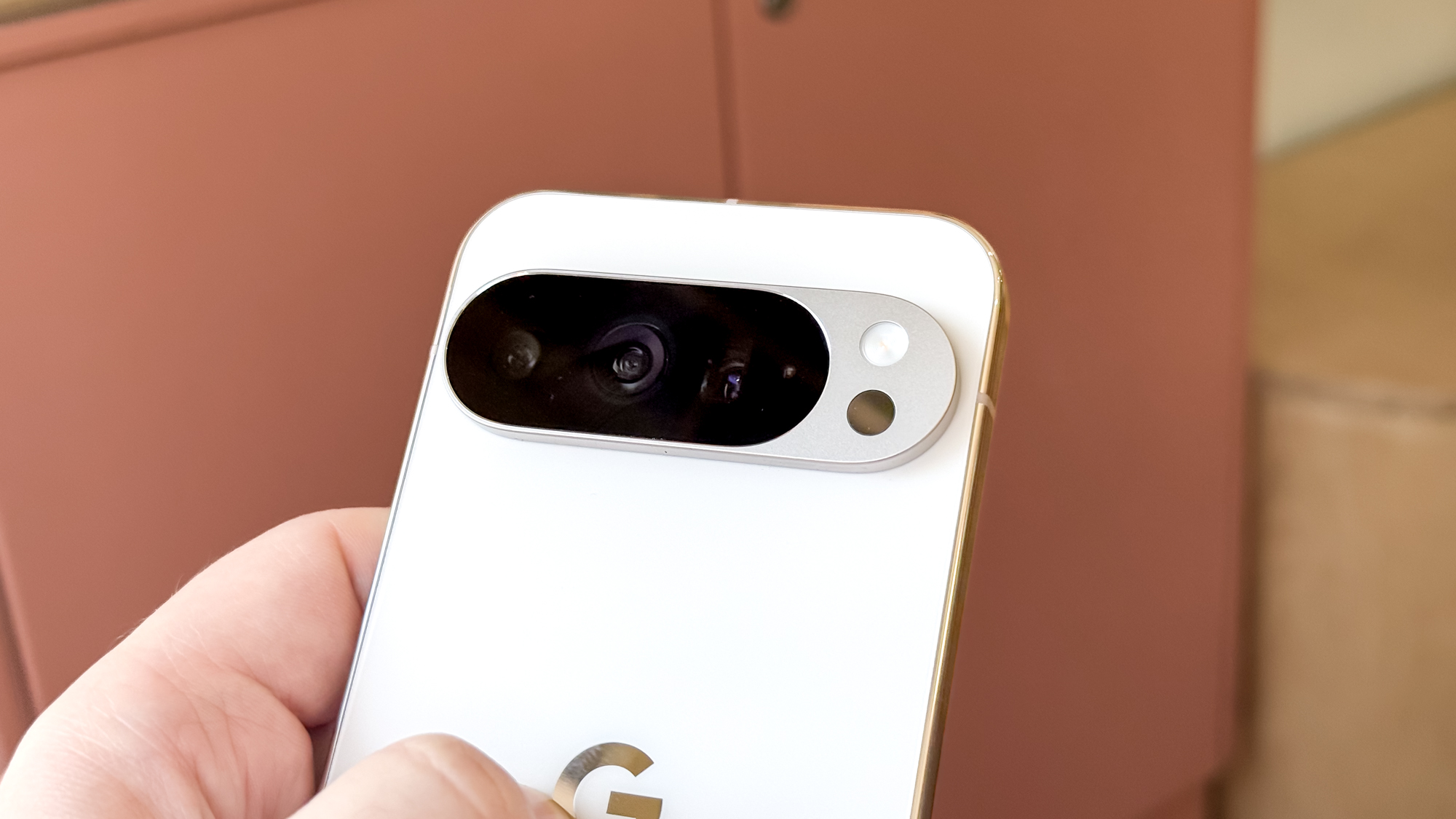
There are alterations to be found if you look closer. Google made the phone's rear 'G' logo metallic, slimmed the bezel around the rear camera bar, moved the SIM card tray to the top of the phone (or removed it entirely in some places) and added a second speaker opening to the bottom. But the only real difference is the overall width.
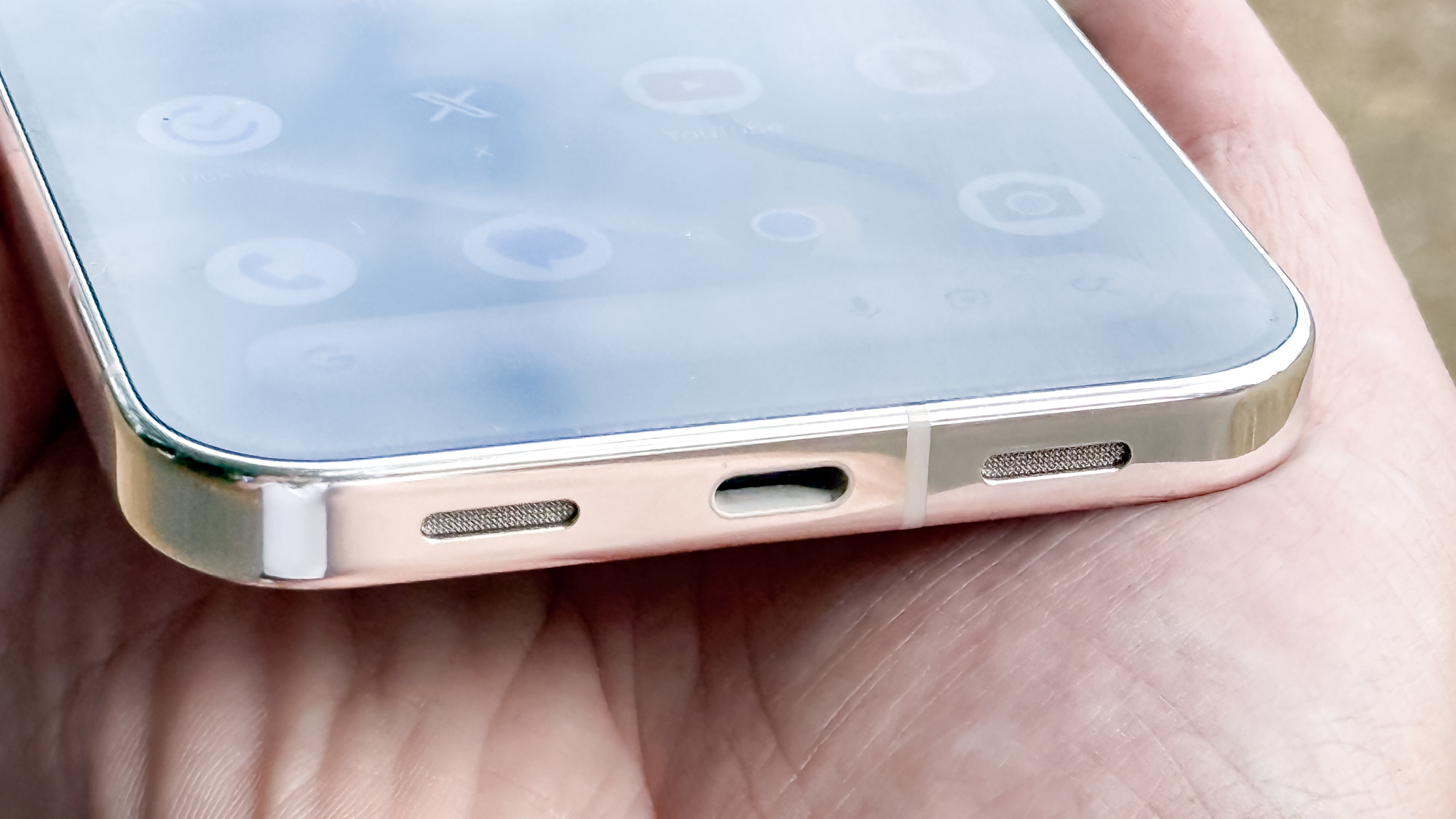
The size change results in a larger display and a total weight that's about 5% heavier than the Pixel 9 Pro XL. That gives the Pixel 10 Pro XL the status of the heaviest of the main flagship phones on sale today, although only by a few fractions of an ounce.
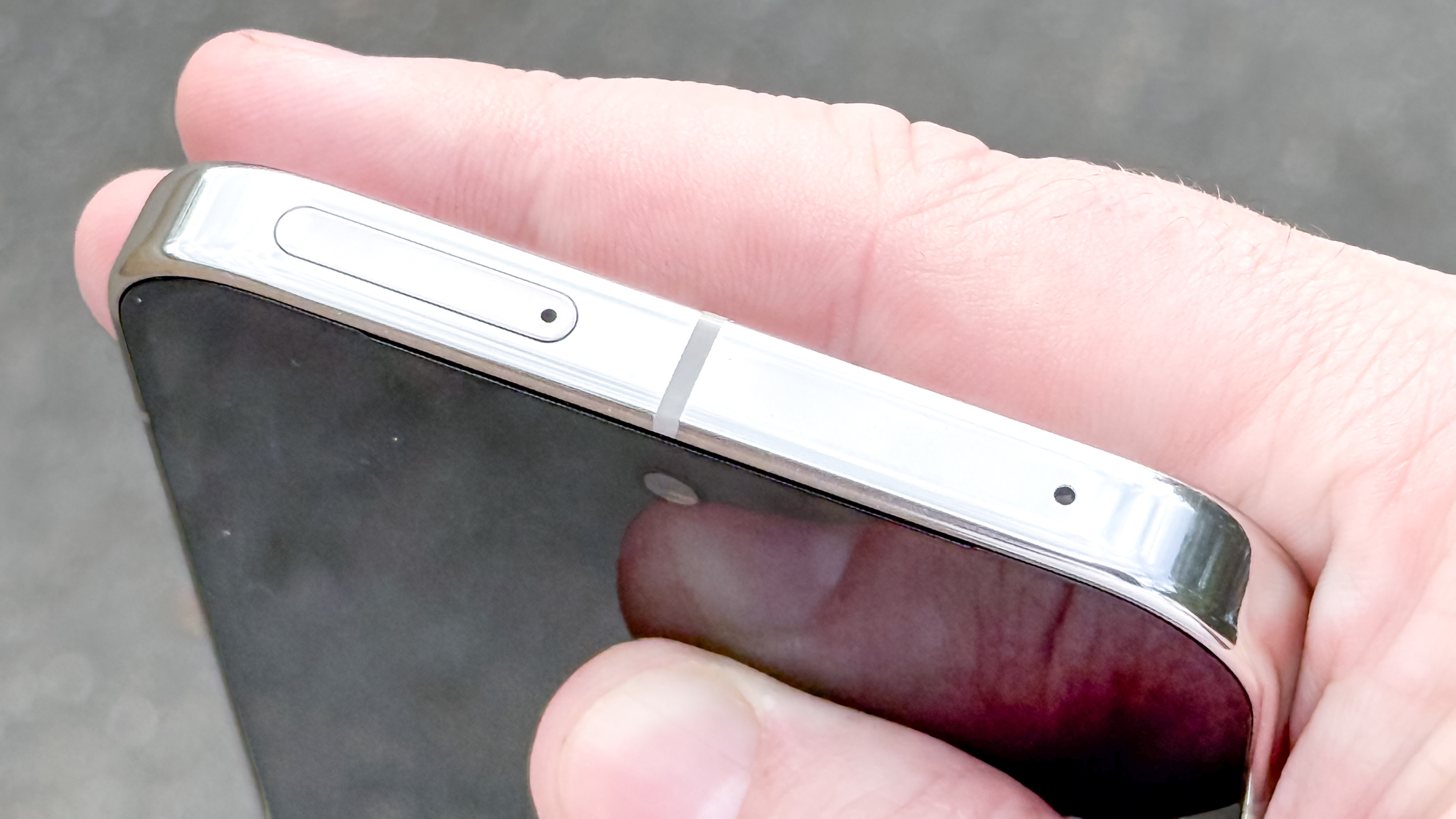
One other change that applies only to U.S. Pixel 10s is the removal of physical SIM support. It's eSIM-only for American customers, while the rest of the world can still plug in their nanoSIM card.
Your four color choices for the Pixel 10 Pro XL are Moonstone blue-gray, Jade green, Porcelain white or Obsidian black. It's a reasonable amount of choice, but the Pixel 10 base model has the most eye-catching hues in the family.
Google Pixel 10 Pro XL: Display
The 6.8-inch, 120Hz adaptive display on the Pixel 10 Pro XL is slightly larger than the Pixel 9 Pro XL's but still a little smaller than the equivalent Samsung or Apple models. But the size difference is offset by the Super Actua screen's incredible brightness.
| Row 0 - Cell 0 | Google Pixel 10 Pro XL (Vivid/natural) | Samsung Galaxy S25 Ultra (Vivid/natural) | Google Pixel 9 Pro XL (Vivid/natural) | iPhone 16 Pro Max |
Peak brightness (nits) | 2555 | 1860 | 2353 | 1553 |
sRGB color gamut coverage (%) | 125.7 / 103.7 | 151.5 / 128.1 | 116.9 / 105.00 | 114.1 |
DCI-P3 color gamut coverage (%) | 89 / 73.4 | 107.3 / 90.8 | 82.8 / 74.4 | 80.9 |
Delta-e color accuracy (lower is better) | 0.29 / 0.21 | 0.25 / 0.24 | 0.24 / 0.28 | 0.26 |
The results above show just how intense the screen brightness on the Pixel 10 Pro XL can be, even compared to last year's Pixel 9 Pro XL. The Galaxy S25 Ultra does have the advantage of an anti-glare layer in its display, which helps deal with strong single sources of light, but in generally bright environments, you have an easier time looking at the Pixel's screen.
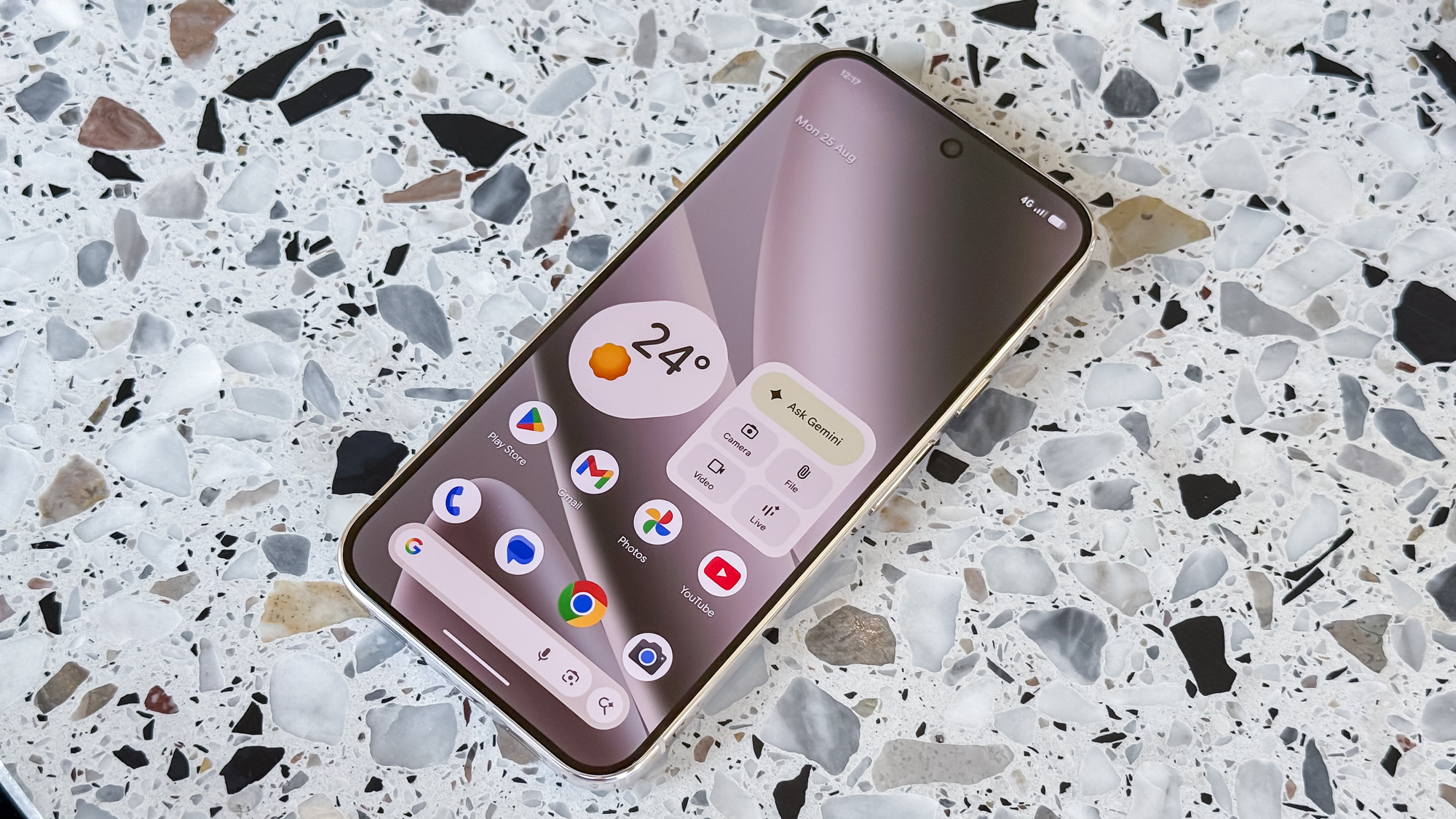
Looking to the other results, we see that the Pixel 10 Pro XL lags behind the Galaxy S25 Ultra in terms of color gamut coverage, and also color accuracy (delta-e) in the default Vivid color profile. But potential buyers needn't worry too much about that — the Pixel 10 Pro XL is still a great device for watching video or browsing photos on.
Google Pixel 10 Pro XL: Cameras
You might be surprised to hear that the Pixel 10 Pro XL's cameras are identical to the Pixel 9 Pro XL's, at least on paper. The 50MP main, 48MP ultrawide, 48MP 5x telephoto and 42MP selfie cameras are unchanged from the 2024 model, as all the upgrades are located on the software side.
Let's kick off the comparisons with a main camera shot of a cottage. We see the first evidence of the Pixel 10 Pro XL's apparent default processing priority — balancing the brightness of all colors in the shot. This is perhaps why the Pixel's shot is much warmer, with the Galaxy S25 Ultra's image being cooler and brighter.
Against the iPhone 16 Pro Max, the Pixel 10 Pro XL also looks less bright, but punches up the colors in return. The trees in the background in this view across a park are much easier to make out in the Google photo.
And how does it compare against the outgoing XL Pixel? This photo of a disused telephone box shows that the Pixel 10 Pro XL gives slightly stronger colors on the blue end of the spectrum, but is otherwise identical to the Pixel 9 Pro XL's image.
In night mode, with our subject being a mini bottle of Henderson's Relish, we see the Pixel 10 Pro XL struggle to capture the light compared to the Galaxy S25 Ultra. But the Pixel does have less of a red color cast, caused by the curtains in the room, than the Galaxy S25 Ultra, which could be an advantage in some cases.
Switching to the ultrawide cameras, and looking over a small stream in a wood, the Pixel's image pales compared to the Galaxy S25 Ultra's far brighter shot. This is likely as a result of the Pixel's relatively small sensor not capturing as much light, and the post-processing not being able to do enough to compensate.
Macro mode also uses the ultrawide sensor. Comparing the Pixel's efforts against that of the iPhone 16 Pro Max of a pink flower, the Pixel's shot is darker, again likely because of its small sensor. But the image still has good contrast as we can still make out the detail in the flower's center.
The final rear camera on the Pixel we need to look at is the 5X telephoto camera, which I pointed at a bridge over a lake. The Pixel has tried to balance the mix of light and shade in the shot, resulting in an apparent lack of color compared to the Galaxy S25 Ultra. While the Samsung shot's richer color of the water is appealing, the bridge is blown out in return.
In terms of selfies, firstly against the iPhone 16 Pro Max, the Pixel 10 XL immediately trips up by failing to cut around my glasses like the iPhone. Its image is much less dramatic looking, but does show my face in a more even light.
As for the Galaxy S25 Ultra, this also gets the portrait cutout right, and also tries to evenly light my face. But it washes out the background severely, unlike the Pixel.
The Pixel 10 Pro XL's telephoto camera offers up to 100x max magnification for the first time, except with the power of Pro Res Zoom, images at that level are still legible, albeit potentially inaccurate. But let's start at a less extreme 50x.
Zooming in on a milestone's carved lettering, it's already obvious that the Galaxy's shot is noisier than the Pixel's. But based on my own observation, the Pixel has oversmoothed the stone, removing some of the texture in an effort to clean up the shot.
At 100x, this effect is even more noticeable. A stone that's been sitting outdoors for who knows how long is unlikely to be as smooth as the Pixel's shot would have you believe. But in terms of legibility, while both photos still show the lettering clearly, the Pixel shows them in crisper detail,
When exporting the images, the Pixel 10 Pro XL conveniently gives you both your original Pro Res Zoom shot and the processed version, allowing some interesting comparisons.
For instance, we have here a church window, about 1,000 feet away from where I was standing as I took the photo. It’s an impressively sharp shot, but the Pixel’s processing systems seem to have read the stone bars between the glass as wood, adding a vertical grain effect. While the detail of the brickwork has been impressively recovered, it shows a big limitation of these generative detail-enhancing tools — it shows you what's likely to be there, rather than what truly is there.

Google enhanced some of the Camera's associated features, such as making Best Take (the face-swapping tool) activate automatically with enough photos, and offering 50MP resolution for portrait modes. But the all-new feature, and the one I spent the most time with, was Camera Coach, the new photography teaching tool that's accessible right from the viewfinder.
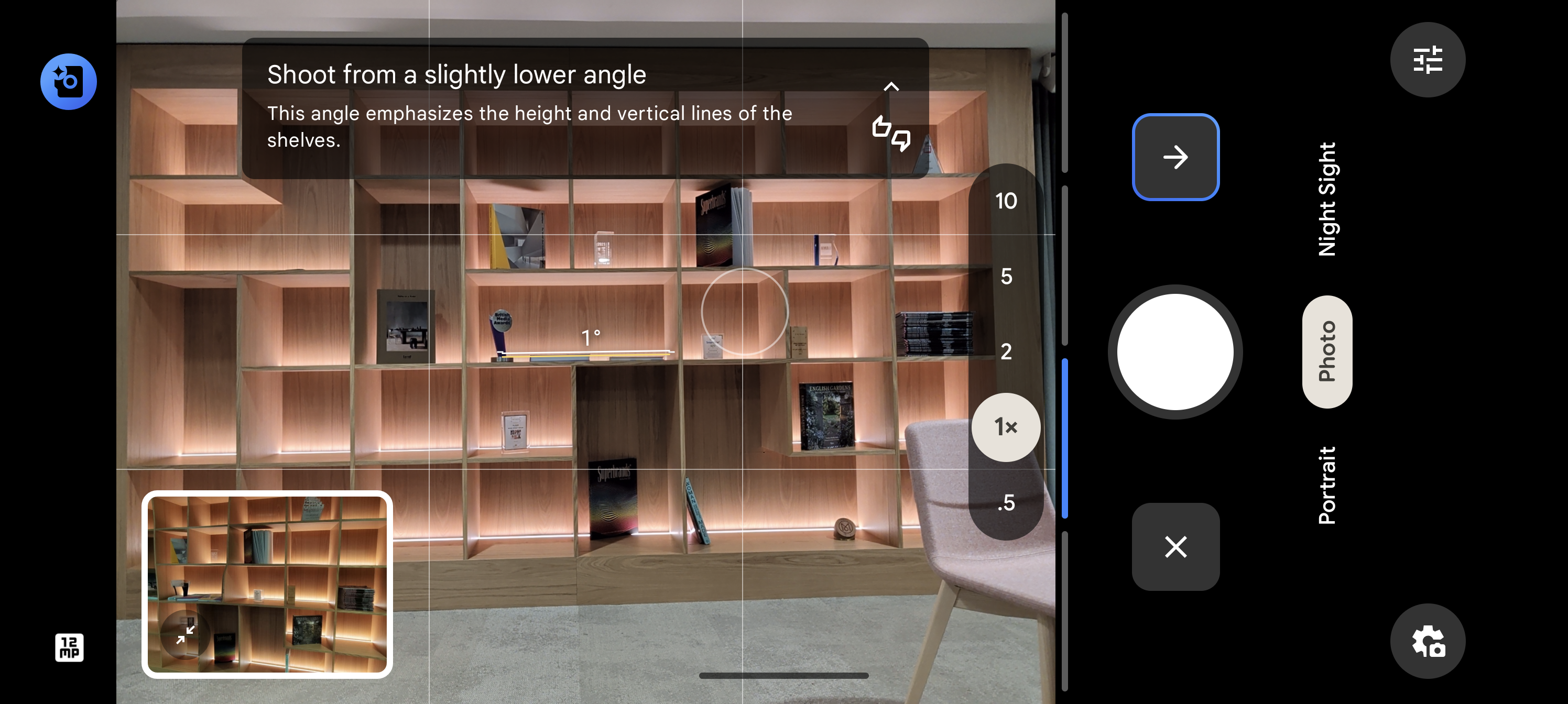
This is currently in "Preview," so hopefully its powers will multiply in the future. But right now, it's more of an interactive framing tool. It'll detect what you're pointing the camera at, offer some suggested compositions and then give you tips on which camera lens to use, where to stand and how to position the subject, if you can. It's a fun, personalized way to learn, but there are so many more tools in the Pixel 10 Pro XL's toolbox.
I hope more options, or perhaps an advanced mode, appear in future to help guide users to try even more, like switching between vertical and horizontal shots, setting a manual focus or adjusting exposure.
Google Pixel 10 Pro XL: Performance
Google's updated the chip in its Pixel 10 models to a Tensor G5, and paired Pro models, including the Pixel 10 Pro XL, with 16GB RAM. Considering that previous Tensor-powered Pixels have lagged behind in performance, we were curious to see how this update changes things.
| Row 0 - Cell 0 | Google Pixel 10 Pro XL | Samsung Galaxy S25 Ultra | Google Pixel 9 Pro XL | iPhone 16 Pro Max |
Chipset | Tensor G5 | Snapdragon 8 Elite For Galaxy | Tensor G4 | A18 Pro |
Geekbench 6 score (single-core / multi-core) | 2322 / 6286 | 3031 / 9829 | 1929 / 4747 | 3386 / 8306 |
3DMark Wild Life Extreme Unlimited (score / fps) | 3462 / 20.7 | 5912 / 35.4 | 2557 / 15.3 | 3822 / 22.9 |
Adobe Premiere Rush time to transcode (mins:secs) | 2:19 | 0:52 | No result | 0:21 |
As the results demonstrate, the Pixel 10 Pro XL is noticeably improved over the Pixel 9 Pro XL, but still underpowered when looking at the Snapdragon and A-series chips that power the Galaxy S25 Ultra and iPhone 16 Pro Max. The Adobe Premiere Rush video test shows this especially.
In my usual gaming test of playing the graphically intense RPG Ex Astris, in order to get a consistent 60fps frame rate, I had to turn off anti-aliasing, reduce the resolution from Ultra to High and environment quality down to Average, and even then the game would still experience hiccups. Android flagships with the Snapdragon 8 Elite can easily handle this game at maximum settings.
Now that the 128GB Pixel Pro XL model has been discontinued, the Pixel 10 Pro XL starts with 256GB storage, with the option to up that to 512GB or 1TB storage.
This should be speedy storage to load and unload, thanks to Google using the UFS 4.0 memory standard. With 512GB or 1TB of storage on a U.S. model, you also get Zoned UFS, a feature that supposedly organizes data within your device's storage to improve its efficiency, speed and the device's lifespan. We're not sure why this is limited to only two out of three storage options, and only to American customers, but it sounds like a bonus worth having.
Google Pixel 10 Pro XL: Battery and charging
The 5,200 mAh battery in the Pixel 10 Pro XL is the largest Google's ever put in a phone. And fortunately, between the extra capacity and the improved Tensor G5 chip, this results in good battery life gains.
The Pixel 10 Pro XL lasted 14 hours and 20 minutes in adaptive display mode on the TG custom battery test, which involves constant web browsing over a cell connection. This is almost an hour and a half longer than the Pixel 9 Pro XL achieved. But Google still has catching up to do if it wants to match the 17+ hours that the Galaxy S25 Ultra and iPhone 16 Pro Max clocked.
Using the Pixel 10 Pro XL's 45W wired charging, we were able to fill the phone from empty to 33% and 63% full after 15 minutes and half an hour charging times respectively. The Galaxy S25 Ultra manages to reach 37% and 71% in the same time frame, although its smaller battery capacity no doubt helps there.

We must also highlight the 25W wireless charging that the Pixel 10 Pro XL now supports, using the new Qi2.2-compatible Pixelsnap accessories. You can use this with MagSafe chargers designed for iPhones too, opening up a huge world of possible add-ons for your Pixel.
Google is the first big Android smartphone maker to adopt Qi2 fully, and hopefully this heralds wider adoption among Android brands down the line. But focusing on the Pixel for now, it means that if you do happen to switch from an iPhone, you can keep using your chargers and some other accessories, saving you spending more on a new set of peripherals.
Google Pixel 10 Pro XL: Software and AI features
Here's where the Pixel 10 Pro XL's main upgrades lie. As the first big phone maker to embrace genAI features back in 2023, it's no surprise that this remains the Pixel 10 series' focus.
The feature I was most looking forward to trying out was Magic Cue, which takes the password or 2FA code autofill you've seen on phones before to another level by surfacing info in your messages or in calls as the phone thinks you need it.
But the magic in the name seems to apply to a disappearing act, as I didn't see the feature pop up once in my whole week of testing, despite switching everything on in Settings. I was aware that Daily Hub, the summary feature similar to Samsung's Now Brief, isn't yet available here in the U.K., but none of the suggestions that Google showed off on stage have popped up to help.
Update (August 28) - I have now got this feature working after leaving the beta version of Messages and gBoard. If you're having trouble, it's worth checking if any of the key apps you're using may be currently incompatible with Magic Cue.
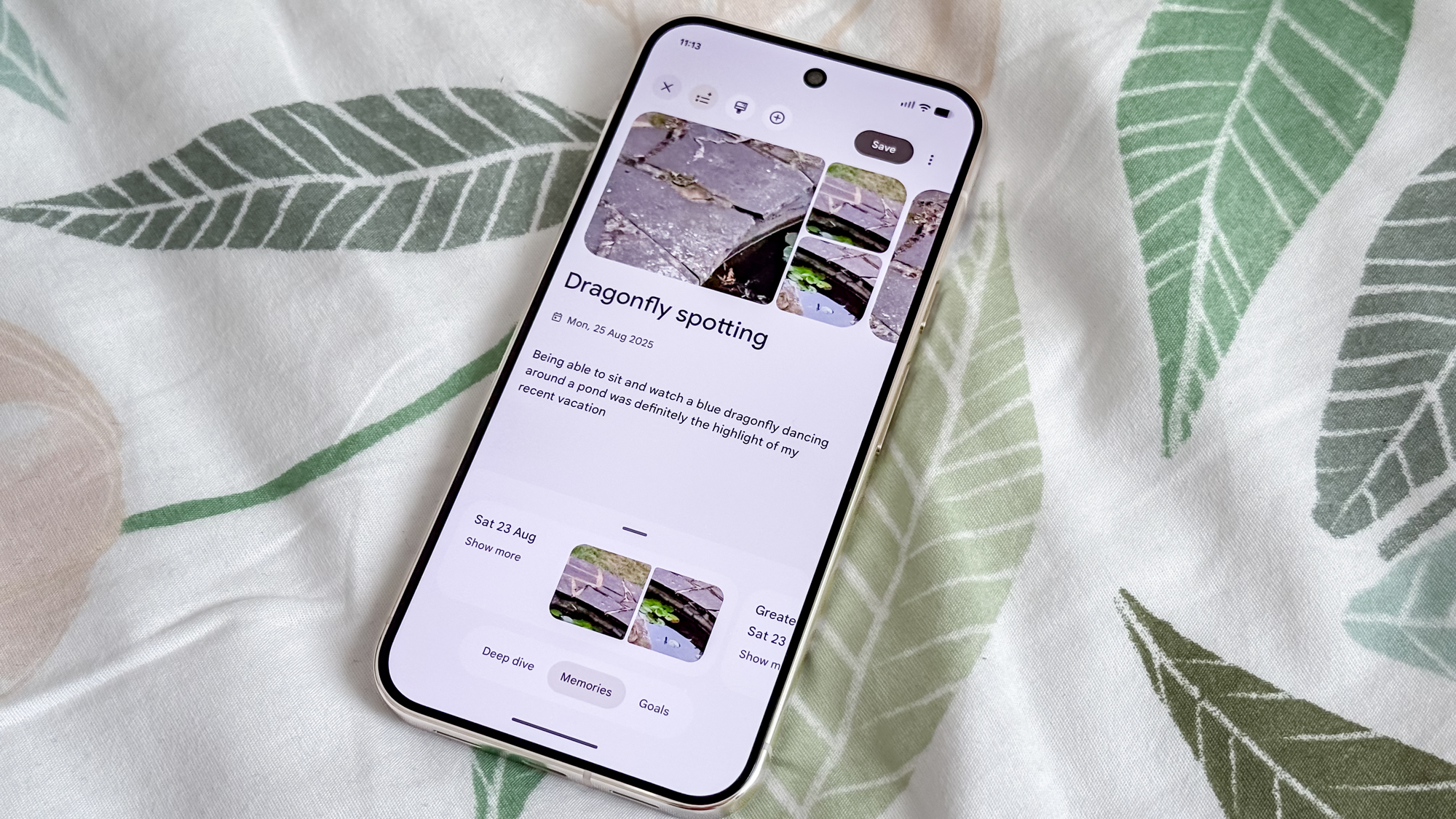
Other additions to the Pixel 10 Pro XL's software feature arsenal include a Pixel Journal app, a nice way to record your daily thoughts alongside photos, locations and other info from your day. I also had fun with Create Music, which lets you turn Recorder files into tracks with AI-implemented music, based on a handful of genres. There's also Voice Translate in calls, which does a reasonable job of imitating people's voices in order to let you speak the same language.
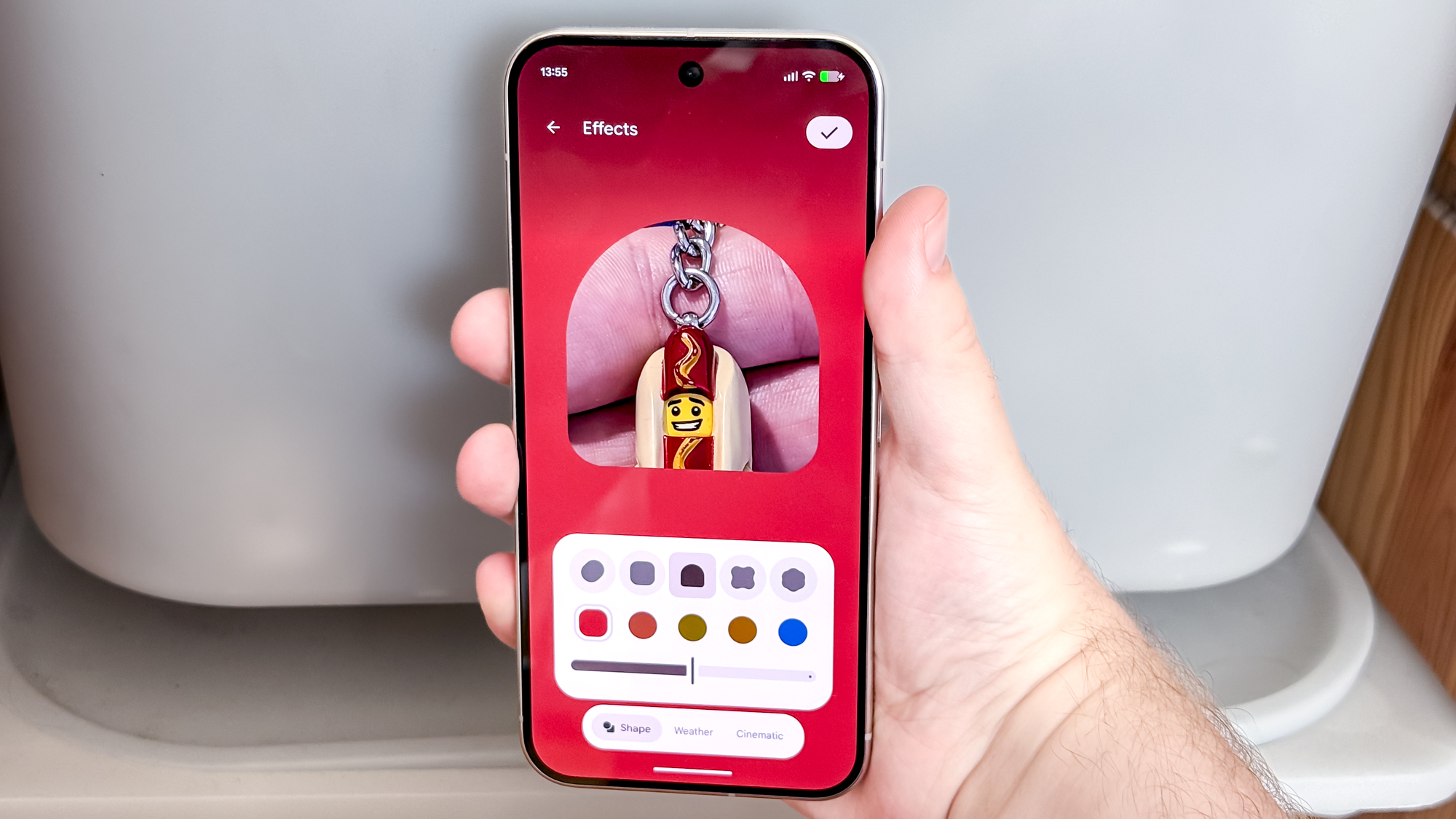
On the aesthetic front, there are new dynamic effects and templates for the lock screen, plus an AOD mode that shows your phone's wallpaper, in the style of recent iPhones and Galaxys, to help keep the Pixel up to speed with its main competition.
And Pixel Screenshots, a handy index of all your screengrabs, still works excellently, even as other companies have now imitated the feature with their own phones. It's even got NotebookLM integration to help you add relevant captures to your notebooks.
More important than any currently available (or unavailable) feature on the Pixel 10 series is the continued commitment by Google to provide the phone with seven years of full updates. That's the most that any major phone maker offers, and while we've yet to see a phone reach the end of a seven-year update schedule like this yet, hopefully we can trust Google to keep its word and offer Pixel 10 owners an update to Android 23 in 2032.
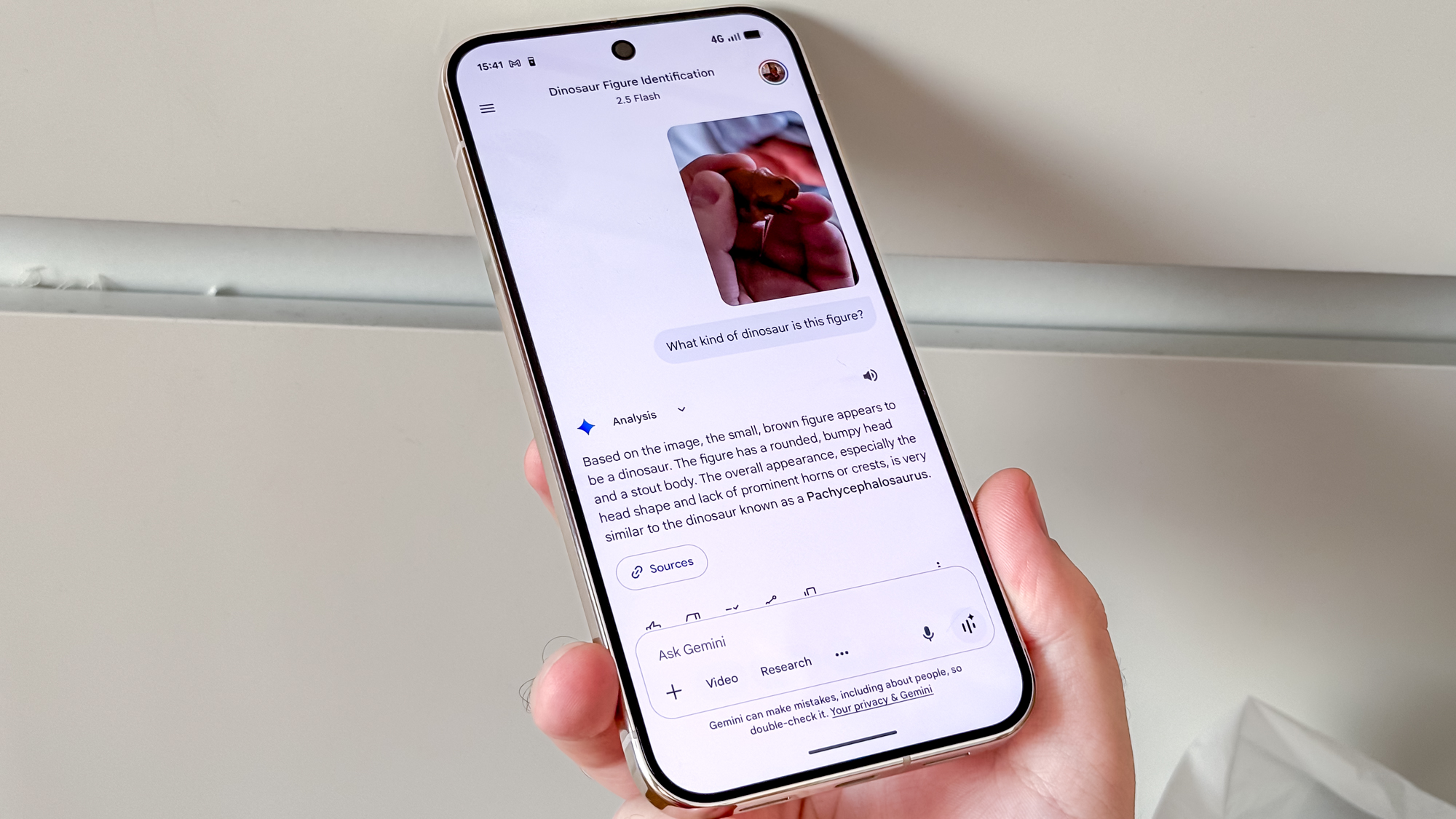
A fun bonus that comes with your Pixel 10 Pro or Pro XL purchase is a free year of Google AI Pro. Normally costing $20 a month, this opens up Google's Gemini Pro and Deep Research tool, plus limited access to Veo 3 Fast video generation and 2 terabytes of cloud storage.
Google Pixel 10 Pro XL review: Verdict
Google's made a few but effective upgrades to the Pixel 10 Pro XL. It's a masterclass in efficiency, changing and improving just enough to stay amongst the top of the pack in most areas. The display's brightness is unmatched, and the cameras, ultrawide perhaps aside, offer a balanced, natural look that I can see a lot of people liking.
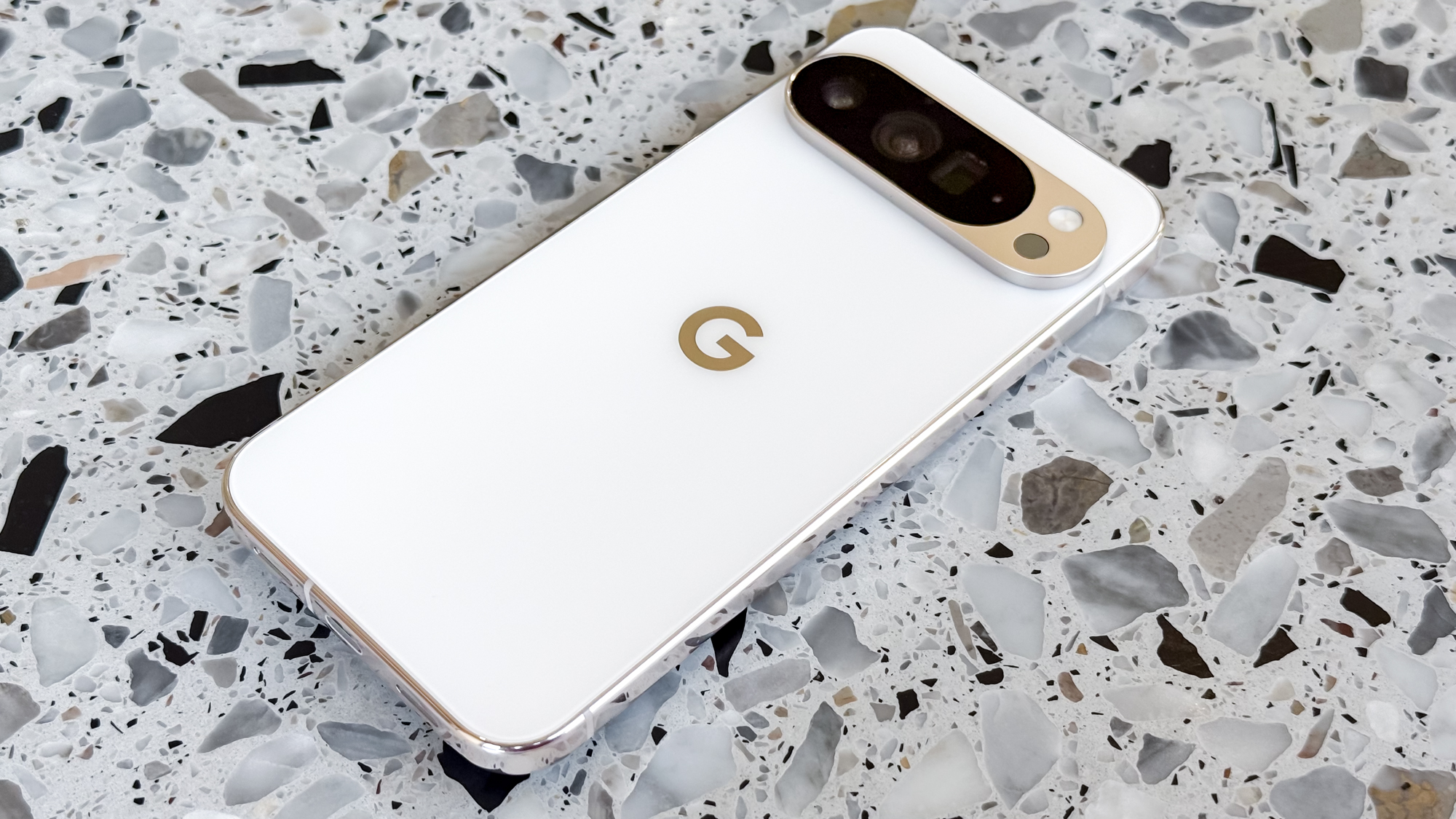
It's unfortunate that the Pixel 10 series is still the lowest powered of the flagship phones on sale today, and lags behind its main rivals on battery efficiency. Hopefully access to Google's latest AI tools makes up for that for anyone who decides to take the plunge, although perhaps give it a couple of months if this is your primary reason. Hopefully by then, the seemingly incomplete Magic Cue and the “Preview” version of Camera Coach will have been made whole.
The Galaxy S25 Ultra may still be a better pick for you if you want more power and power efficiency from your phone. The Pixel 10 Pro may also be a better fit than the XL, considering you only sacrifice display size and battery life for a cheaper phone that's otherwise just as capable as its larger sibling.
But the Pixel 10 Pro XL is the most capable and competitive of Google's latest batch of phones. If you're buying a phone right now, and want best-in-class software combined with top tier hardware, this Pixel is probably the one to pick.

Richard is based in London, covering news, reviews and how-tos for phones, tablets, gaming, and whatever else people need advice on. Following on from his MA in Magazine Journalism at the University of Sheffield, he's also written for WIRED U.K., The Register and Creative Bloq. When not at work, he's likely thinking about how to brew the perfect cup of specialty coffee.
You must confirm your public display name before commenting
Please logout and then login again, you will then be prompted to enter your display name.
